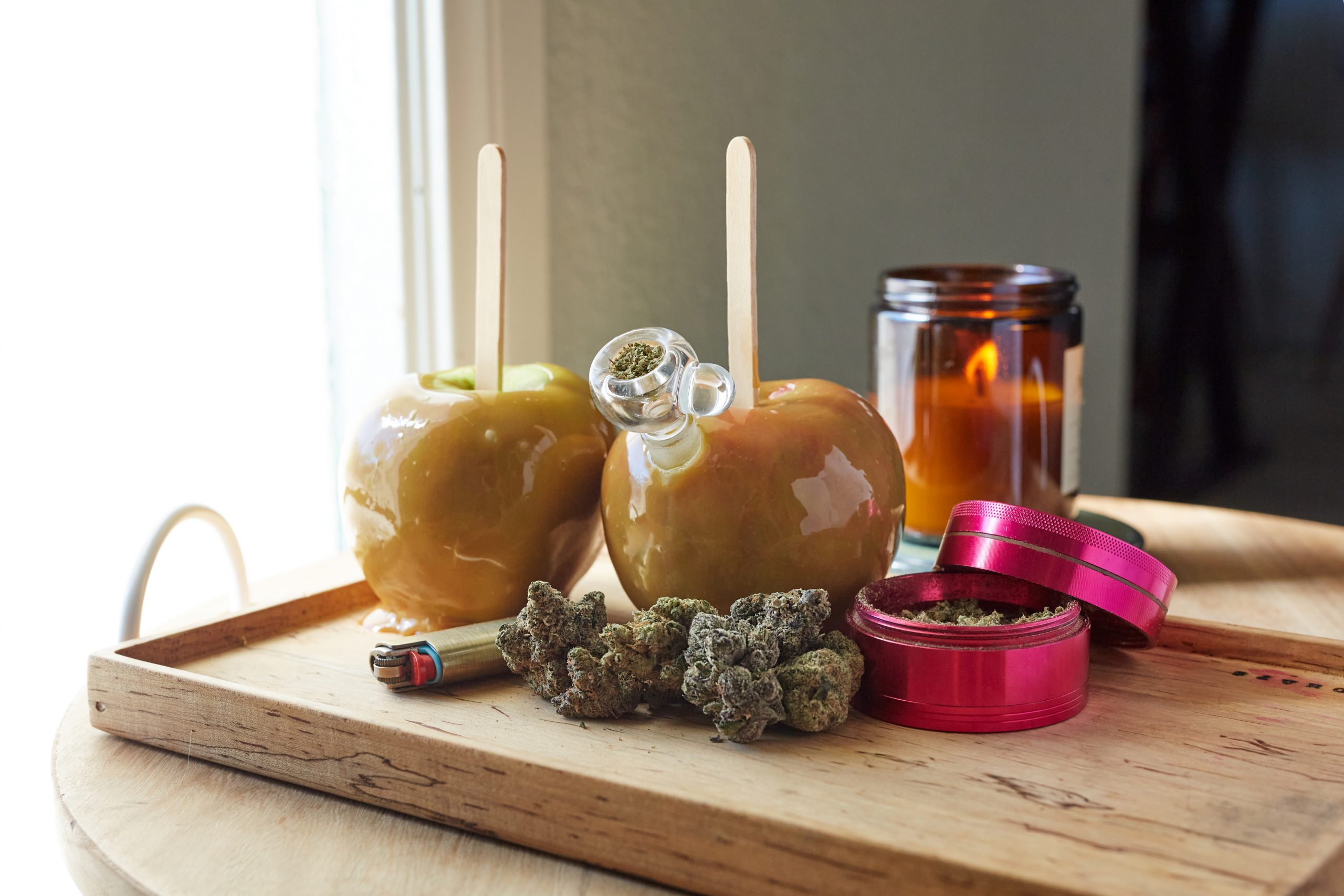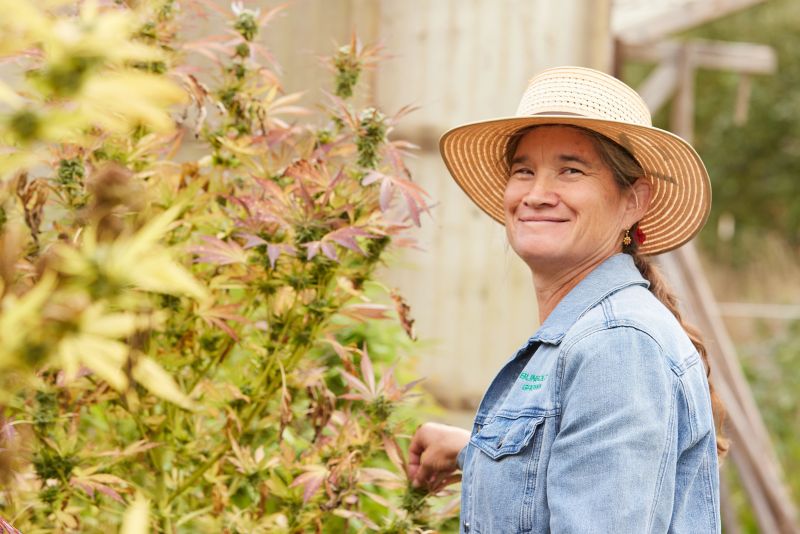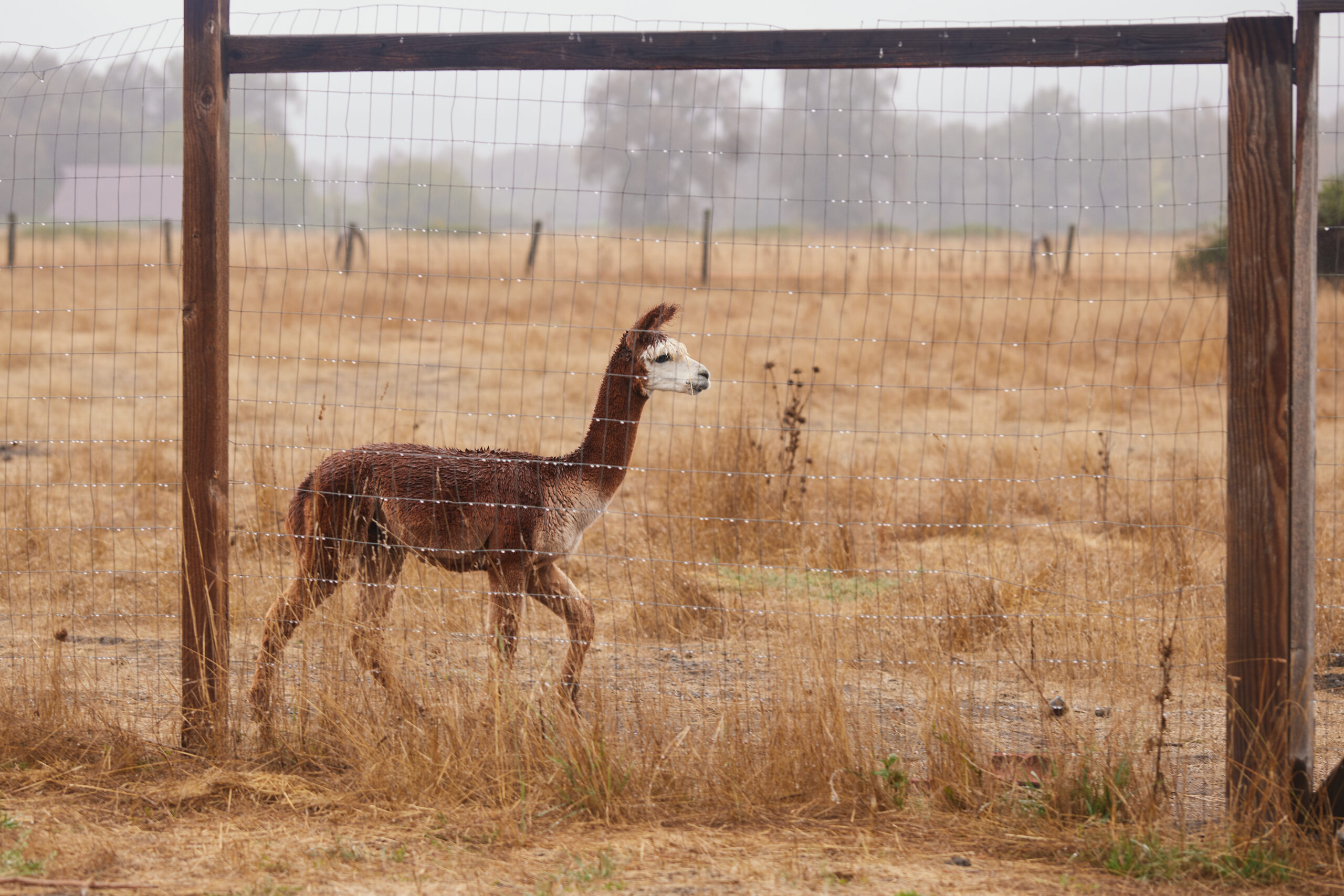There’s a Johnny Appleseed energy affecting contemporary cannabis, and if you have a predilection for apples that extends beyond fruit picking, pie baking, and cider brewing, this list is especially for you.
Apple-like cannabis strains are for everyone, not just fall fanatics. While many apple-branded cultivars are named for their Sour Apple genetics, others earned their monikers, not for the parentage, but for the way they embody the crisp sweetness of a ripe apple, the sour zing of an aged cider, or the airy, floral essence of apple blossoms.
Phenotypes under the Apple umbrella are a diverse bunch, delivering a wide range of both therapeutic and recreational effects. The only requisite is a predilection for the apple, both literally and metaphorically.
Here are a few of our favorite apple strains to get you started, and it can be apple season all year long.
Sort strains by flavor on the Weedmaps app
Apple Blossom
This cross of Blueberry Muffin and Dream Queen reportedly delivers an evenly balanced buzz, with a mild euphoria in the head and a soft, cashmere tingle in the body.
Consumers describe a swooning onset that mellows into a high appropriate for daytime pursuits or restorative sleep sessions, depending on your resting state when consumed. Iridescent mood boosts, grounded energy, and bottomless munchies are the most oft-reported effects, but of course, your results may vary.
Expect a floral, sweet, slightly tart nose and a grassy lemon exhale.
Apple Butter
Consumers shopping for a dazzling cultivar best suited for daytime use should check out Apple Butter, a cross of Apple Fritter — a phenotype of Sour Apple — and Green Crack.
It reportedly delivers a sparkling high with an easy balance of elastic body and crystalline head effects. This hybrid’s genetics are diverse enough to elicit varied effects, so day/night-specific smokers should proceed with caution. Therapeutic consumers report potential relief from mild pain, low moods, and anxiety.
Expect a woody, flowery nose and a tart, sweet apple exhale.
Apple Diamonds
Bred from a cross of Sour Apple and GG4, this phenotype delivers pronounced energetic effects for most consumers. Reported effects include calm mood lifts, giggly euphoria, and a peppy body buzz that works well in social situations.
Apple Diamonds is typically bred with a distinctly potent THC percentage (>30%), so beginner or low-toleranced smokers should start low and go slow rather than taking a whole blunt to the face.
Expect a piney-sweet perfume and a crisp, herbal apple exhale.
Apple Fritter
A cross of Sour Apple and Animal Cookies, Apple Fritter boasts a harmonious lineage and superbly balanced effects. Consumers report a stress-evaporating head high with a powerfully psychotropic onset that unravels into smooth, relaxing body effects.
Therapeutic consumers report potential relief from mild pain, mood swings, and insomnia — especially when paired with copious amounts of apple fritters.
Expect a flowery, fruity, apple-heavy nose and commensurate exhale.
Apples and Bananas
An evenly balanced cultivar with strong apple energy, Apples and Bananas is a complex cross of Platinum Cookies, Granddaddy Purple, Blue Power, and Gelatti. Recreational consumers describe highs that are euphoric and creative if a bit cottony in the head. It also may deliver a tingling, soothing body high that therapeutic consumers report may relieve chronic pain, cramps, and muscle spasms.
Expect an earthy, funky fruit salad perfume and a peppery, apple-forward exhale.
Sour Apple Haze
This mysterious Sour Apple phenotype delivers the brisk, euphoric sweetness of Sour Apple as well as the bright, energetic clarity of classic Haze. Though the Haze phenotypes that contributed to Sour Apple Haze’s genetics remain unknown, consumers overwhelmingly describe effects that err on the side of the most potent Haze, ie; a bit thrilling, euphoric, and altogether perfect for adventure. Therapeutic consumers have used Sour Apple Haze as a potential panacea for nausea.
Expect an apple-infused pine perfume and a candy-apple sweet exhale.
Alien Sour Apple
This cross of Alien Dawg and Sour Apple is another evenly balanced cultivar, delivering both smooth body effects and a gentle, motivational head high.
Many consumers describe effects that build to a flowery crescendo via a slow, deliberate burn, so anticipate a creeper high rather than a bulldozer onset, lest you smoke yourself into a black hole of no return.
Expect a peppery, chemical aroma and a lemony, sweet apple exhale.
Candy Apple
Strain hunter apple fans, take note: Candy Apple is a relatively rare cultivar that’s reportedly well worth the search. This cross of Blueberry, Pineapple, and Afghani strains delivers a decidedly punchy, super-uplifting high tinged with creative euphoria and a long-lasting, blissful mood boost.
Though the onset arrives with only mild fanfare, the effects build over the course of the high, rather than laying you out immediately. Both recreational and therapeutic consumers celebrate Candy Apple for its lethargy and fatigue relief, so perhaps think twice before hitting it before bedtime unless you’re burning the midnight oil.
Expect a tropical vanilla and citrus nose and a candy sweet exhale.


 Cannabis News2 years ago
Cannabis News2 years ago
 One-Hit Wonders2 years ago
One-Hit Wonders2 years ago
 Cannabis 1012 years ago
Cannabis 1012 years ago
 drug testing1 year ago
drug testing1 year ago
 Education2 years ago
Education2 years ago
 Cannabis2 years ago
Cannabis2 years ago
 Marijuana Business Daily2 years ago
Marijuana Business Daily2 years ago
 California2 years ago
California2 years ago
















 Gina Coleman/Weedmaps
Gina Coleman/Weedmaps Gina Coleman/Weedmaps
Gina Coleman/Weedmaps Gina Coleman/Weedmaps
Gina Coleman/Weedmaps Gina Coleman/Weedmaps
Gina Coleman/Weedmaps
 Gina Coleman/Weedmaps
Gina Coleman/Weedmaps Gina Coleman/Weedmaps
Gina Coleman/Weedmaps Gina Coleman/Weedmaps
Gina Coleman/Weedmaps Gina Coleman/Weedmaps
Gina Coleman/Weedmaps Gina Coleman/Weedmaps
Gina Coleman/Weedmaps




